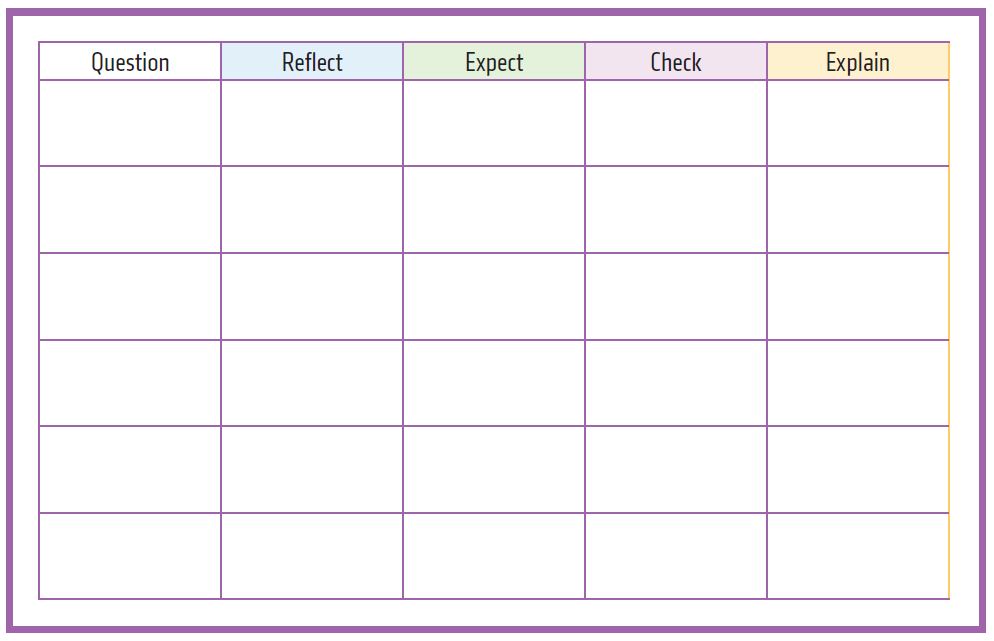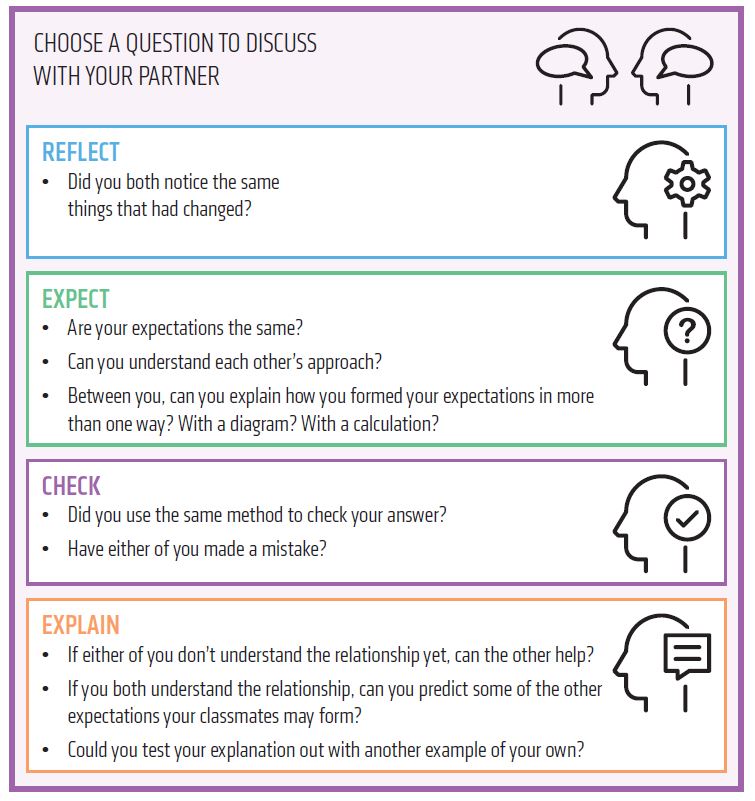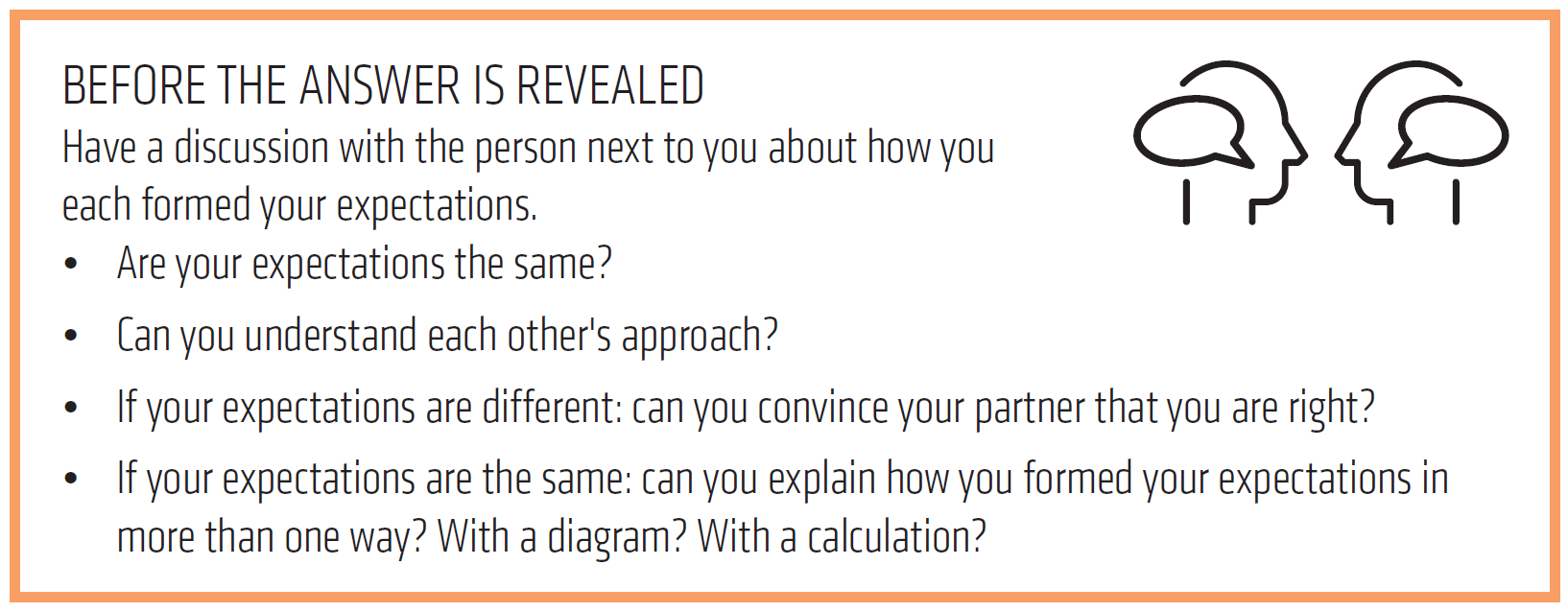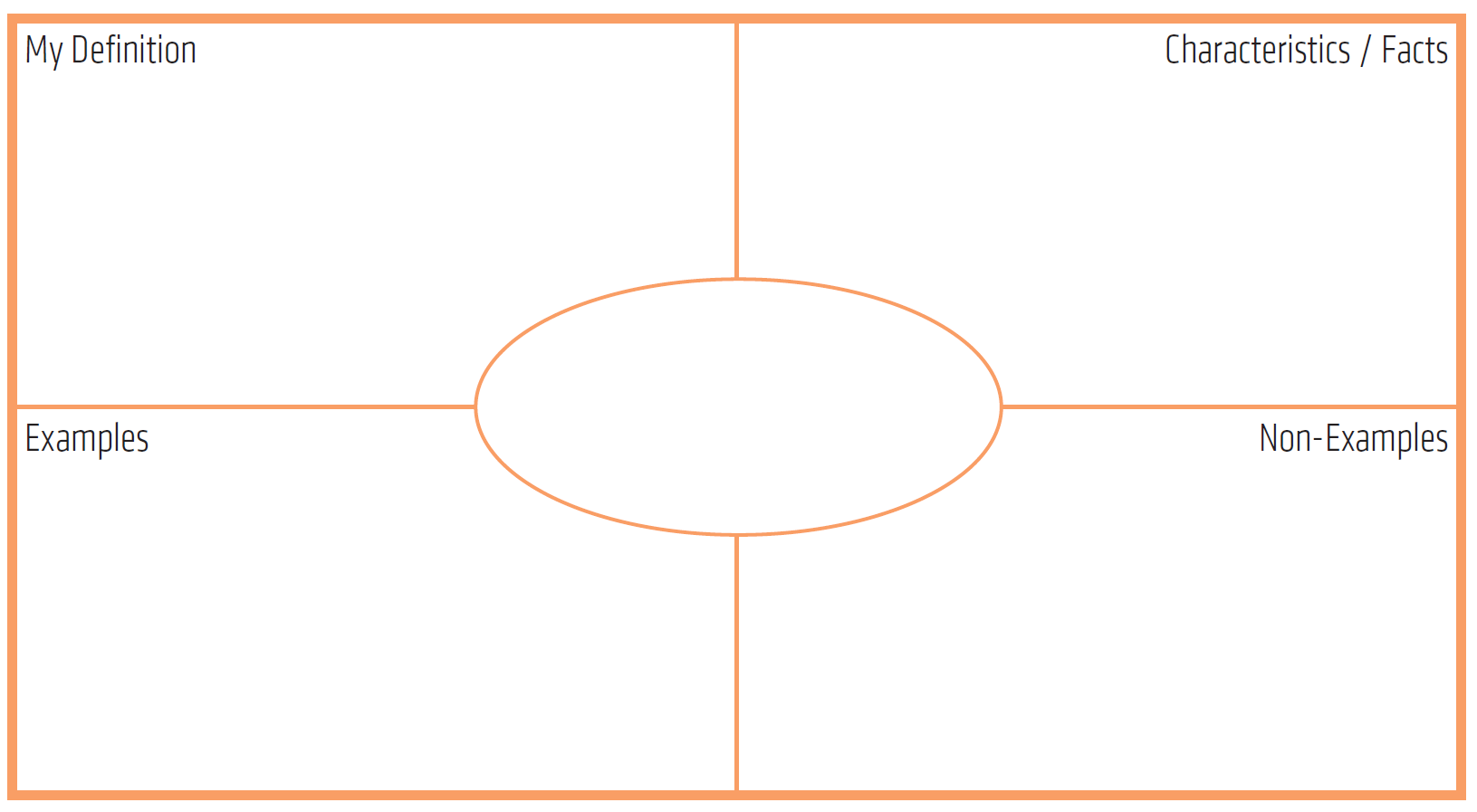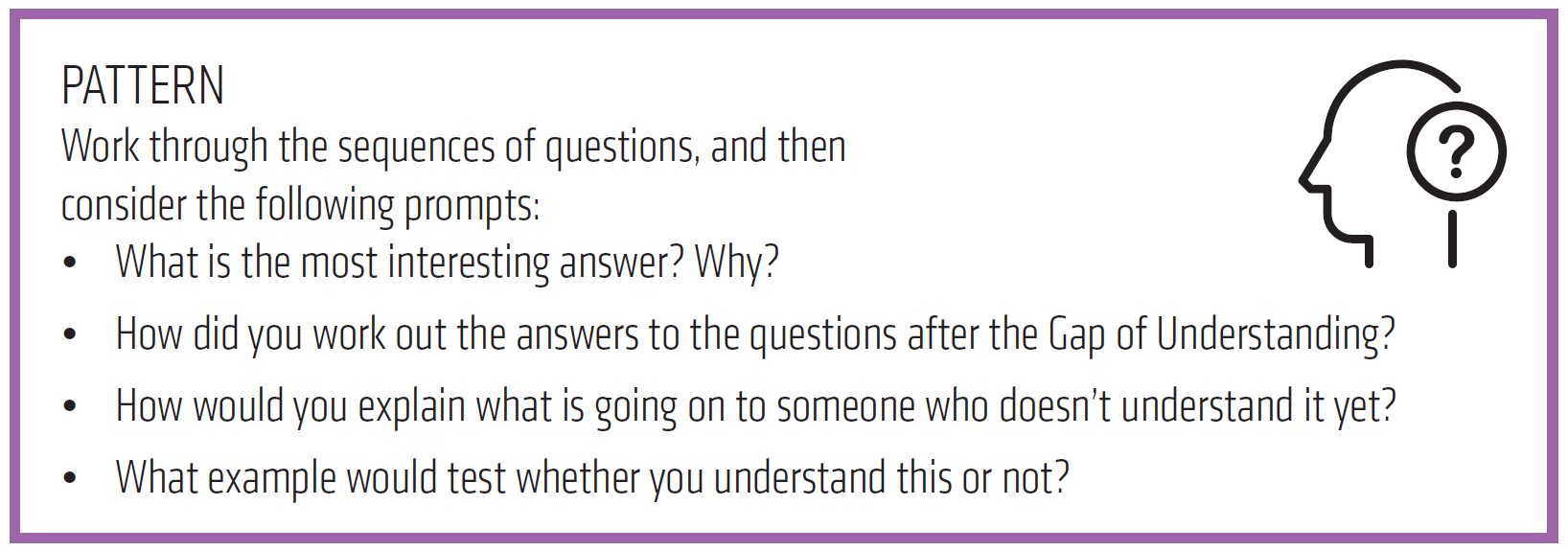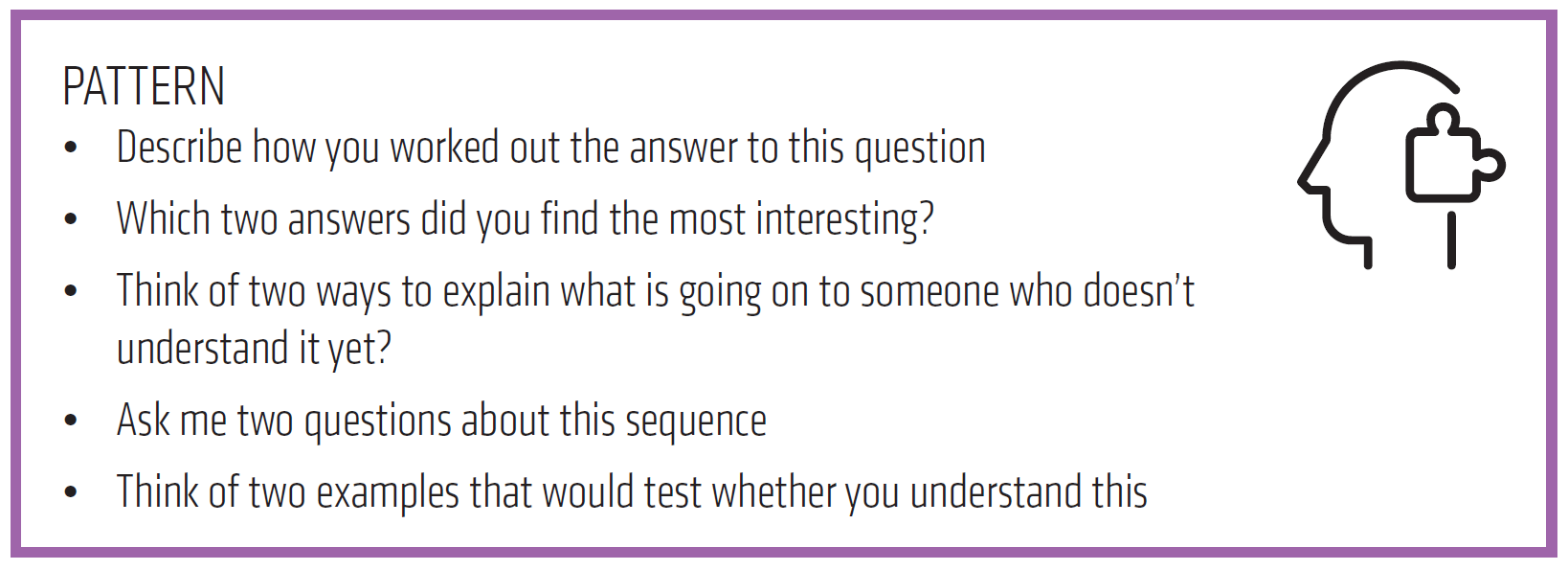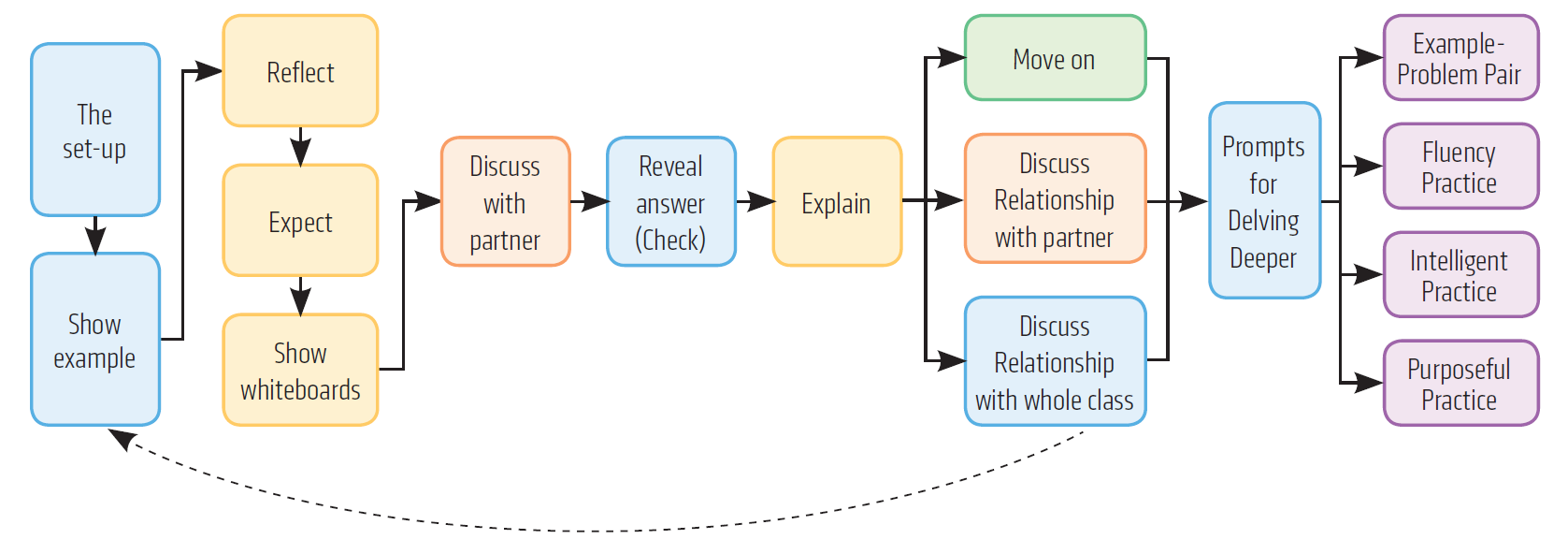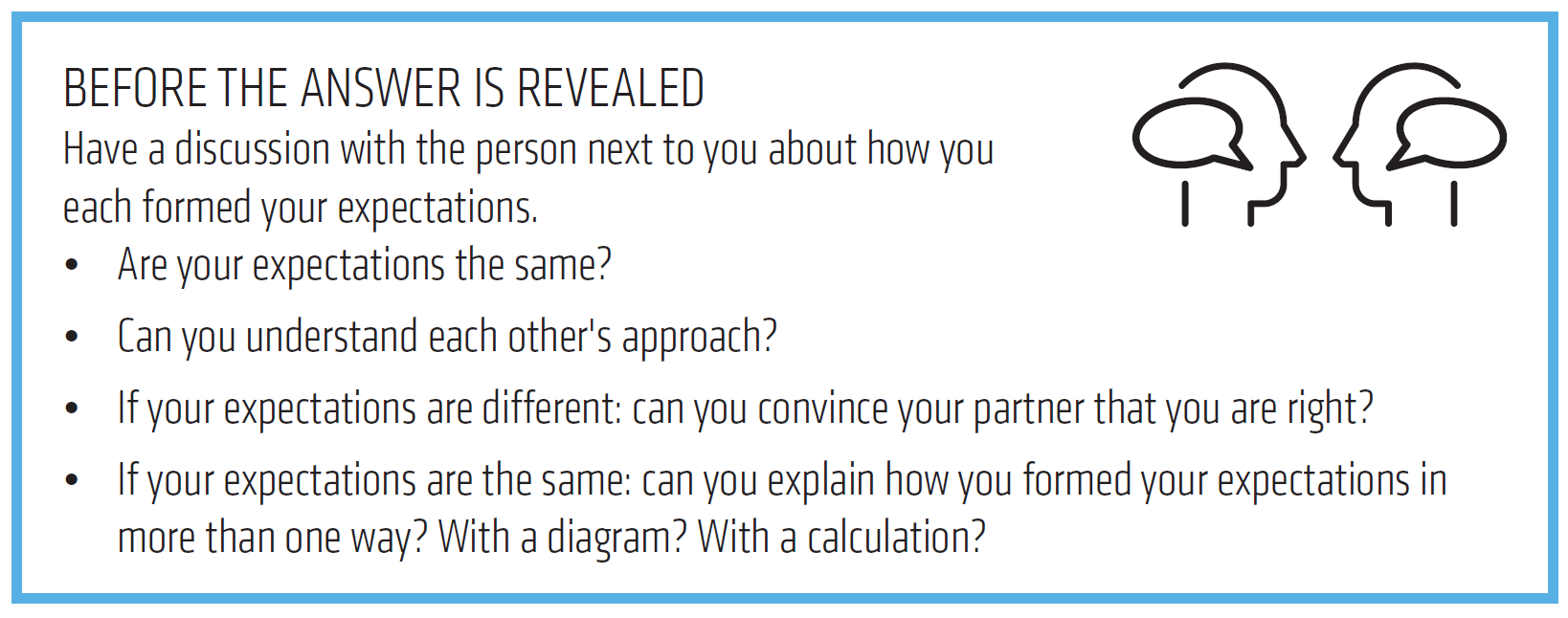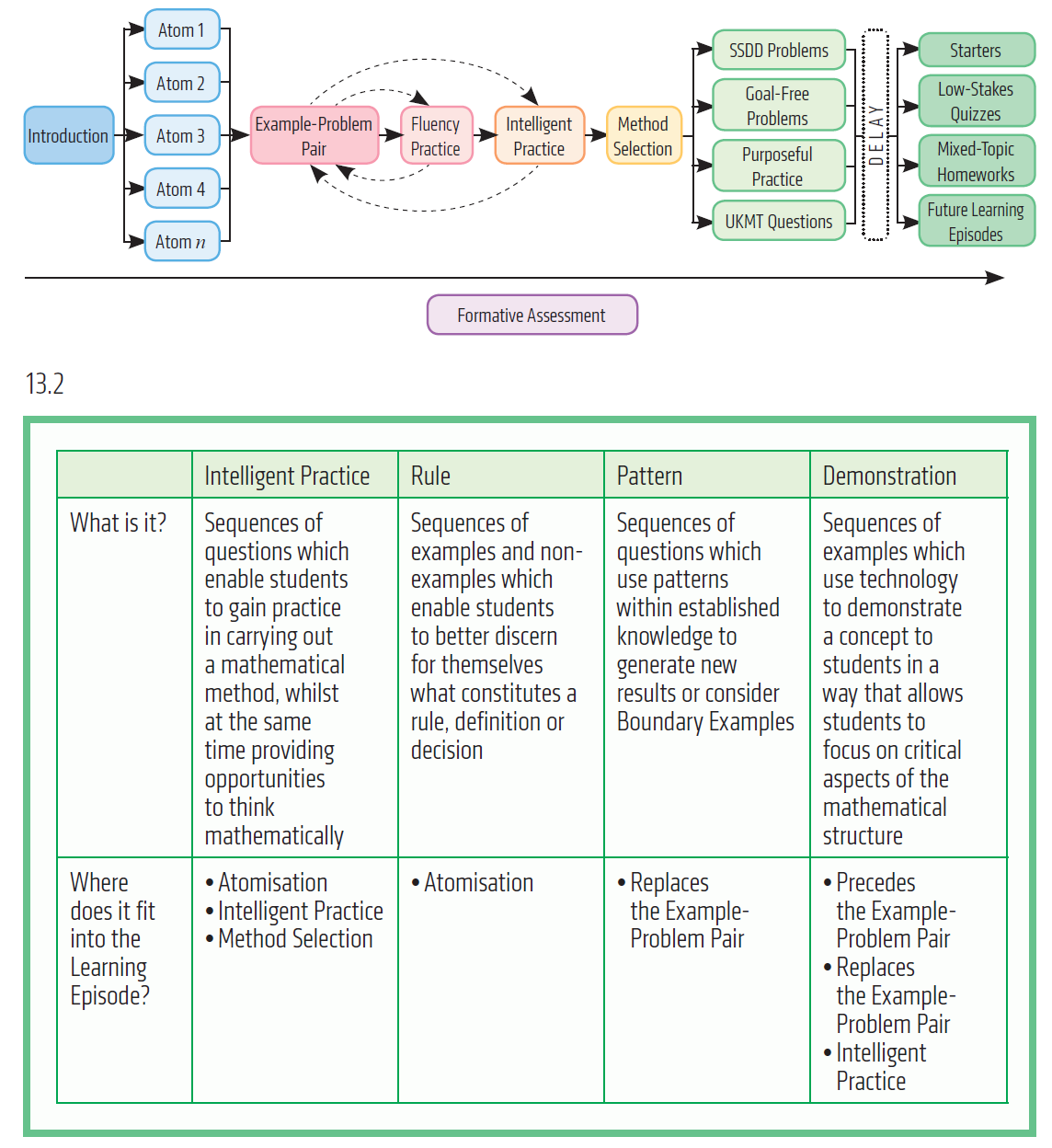Links from Reflect, Expect, Check, Explain
Here you will find the links to all the sequences, diagrams and activities described in my book: Reflect, Expect, Check, Explain.
The best way to view an image in
high-resolution is to right-click and select open image in
new tab.
The best way to save an image is to right-click
on it, select copy image, and then paste it into a
PowerPoint, Word document, etc.
If you have not yet read the book, then it is available from Amazon or John
Catt Educational
My other books, including How I wish I’d taught maths,
can be found here
Back to Top
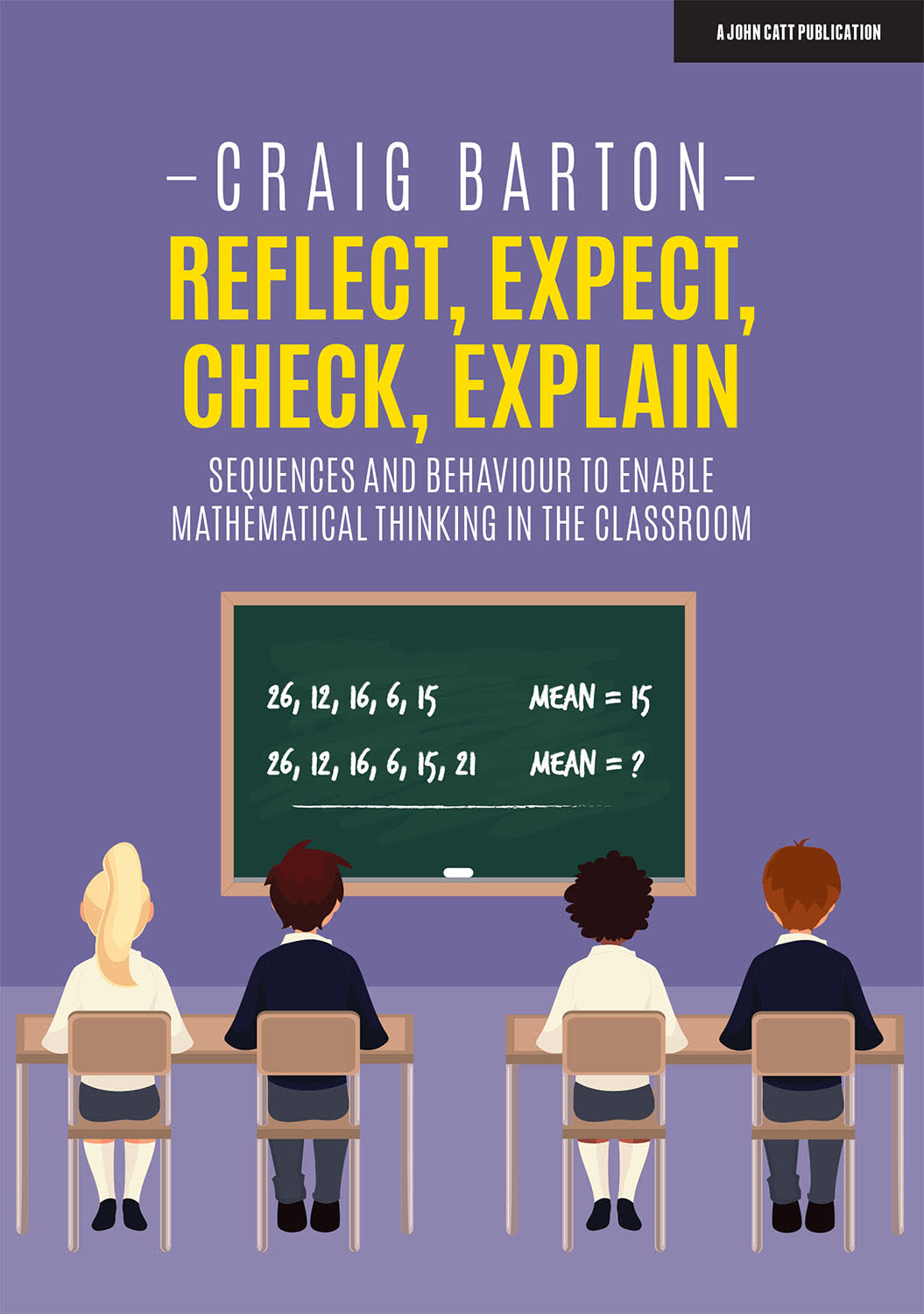
Contents
Key websiteskeyboard_arrow_up
Back to Top
Variation Theory
Diagnostic Questions
and Eedi
SSDD Problems
Maths Venns
Goal-free Problems
Researchkeyboard_arrow_up
Back to Top
Many of the research papers quoted throughout the book and detailed in the References section can be accessed here
Mr Barton Maths Podcastkeyboard_arrow_up
Back to Top
The easiest way to access the podcast episodes quoted in the text is to visit the Mr Barton Maths Podcast homepage
Clicker and timerkeyboard_arrow_up
Back to Top
When running a workshop, the most common questions I am asked concern where I get my clicker and my PowerPoint egg-timer from. I am not sure what that says about the quality of my content. Anyway, here you go:
Logitech
Spotlight clicker
PowerPoint
egg timers
Chapter 1: Intelligent Practicekeyboard_arrow_up
Back to Top
The five stage process for running Intelligent Practice sequences in
the classroom:
The double-pause of questioning:
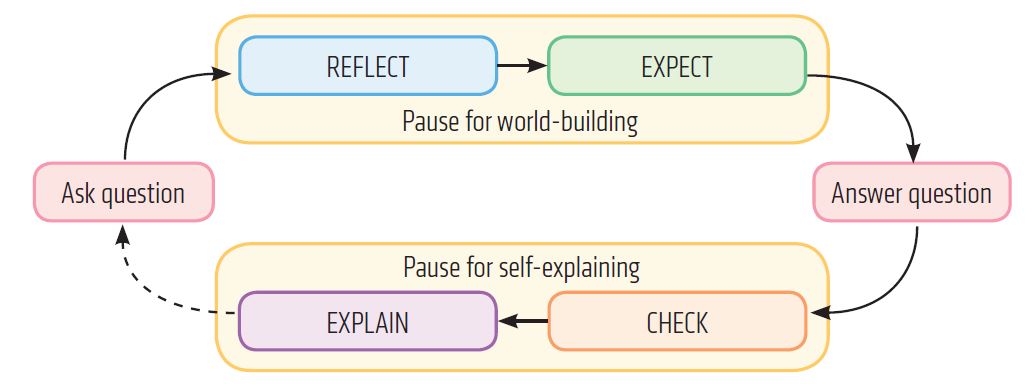
Student Prompts whilst they work on an Intelligent Practice sequence:
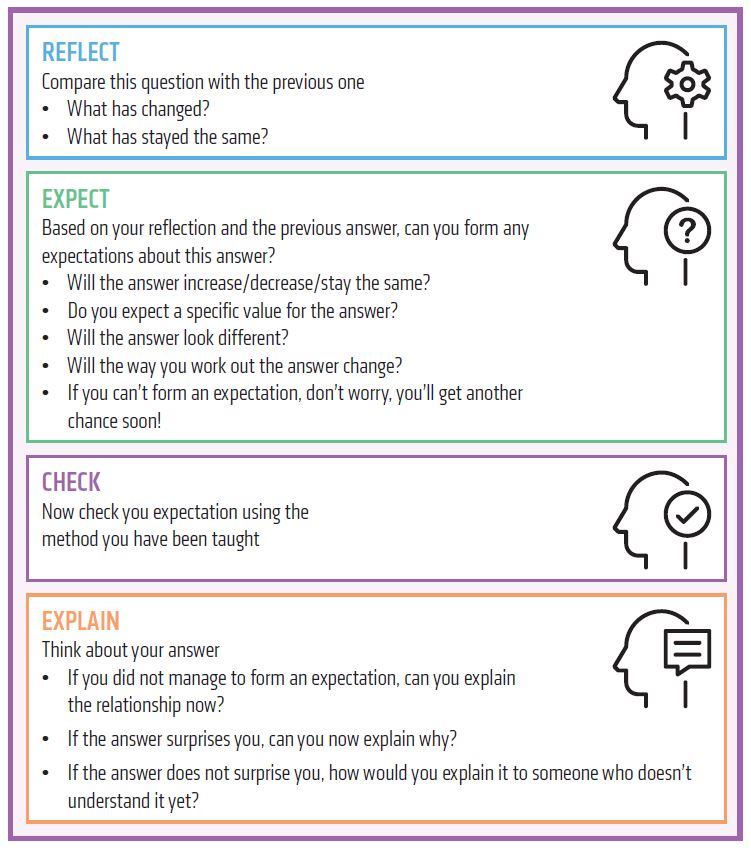
Two possible student templates for them to record their answers
in:
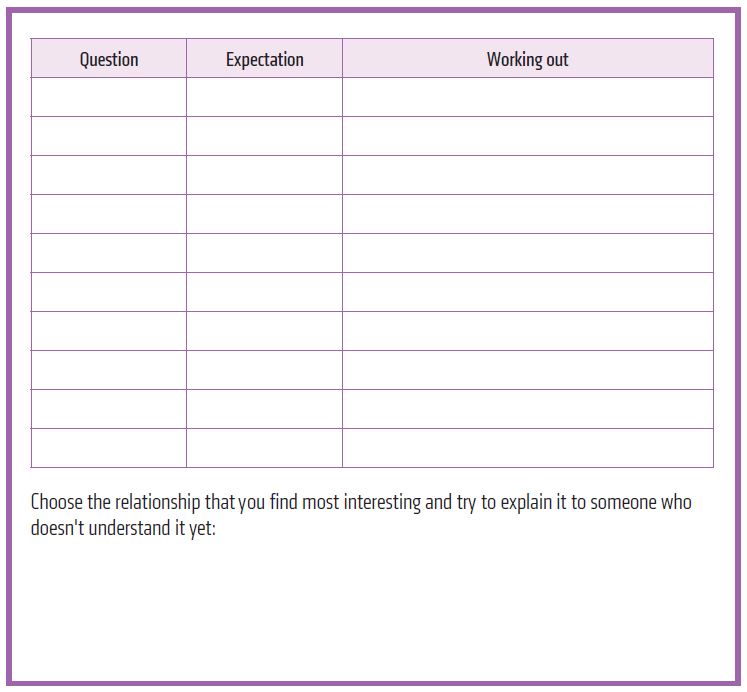
Paired Discussion Prompts to support students working together
on an Intelligent Practice sequence:
Discuss Relationships prompts for the teacher to use when going
through the answers:
Prompts for Delving Deeper for the teacher to use after Discuss
Relationships, or to challenge students who finish early:
- Sequence of questions on calculating an estimate of the mean from grouped data
- Take a Break #1: Subtracting decimals
Take a Break #2: Rounding to 1 decimal placekeyboard_arrow_up
Back to Top
- You can find this sequence here
Chapter 2: Where does Intelligent Practice fit in?keyboard_arrow_up
Back to Top
My model of a Learning Episode:
The Atomisation process:
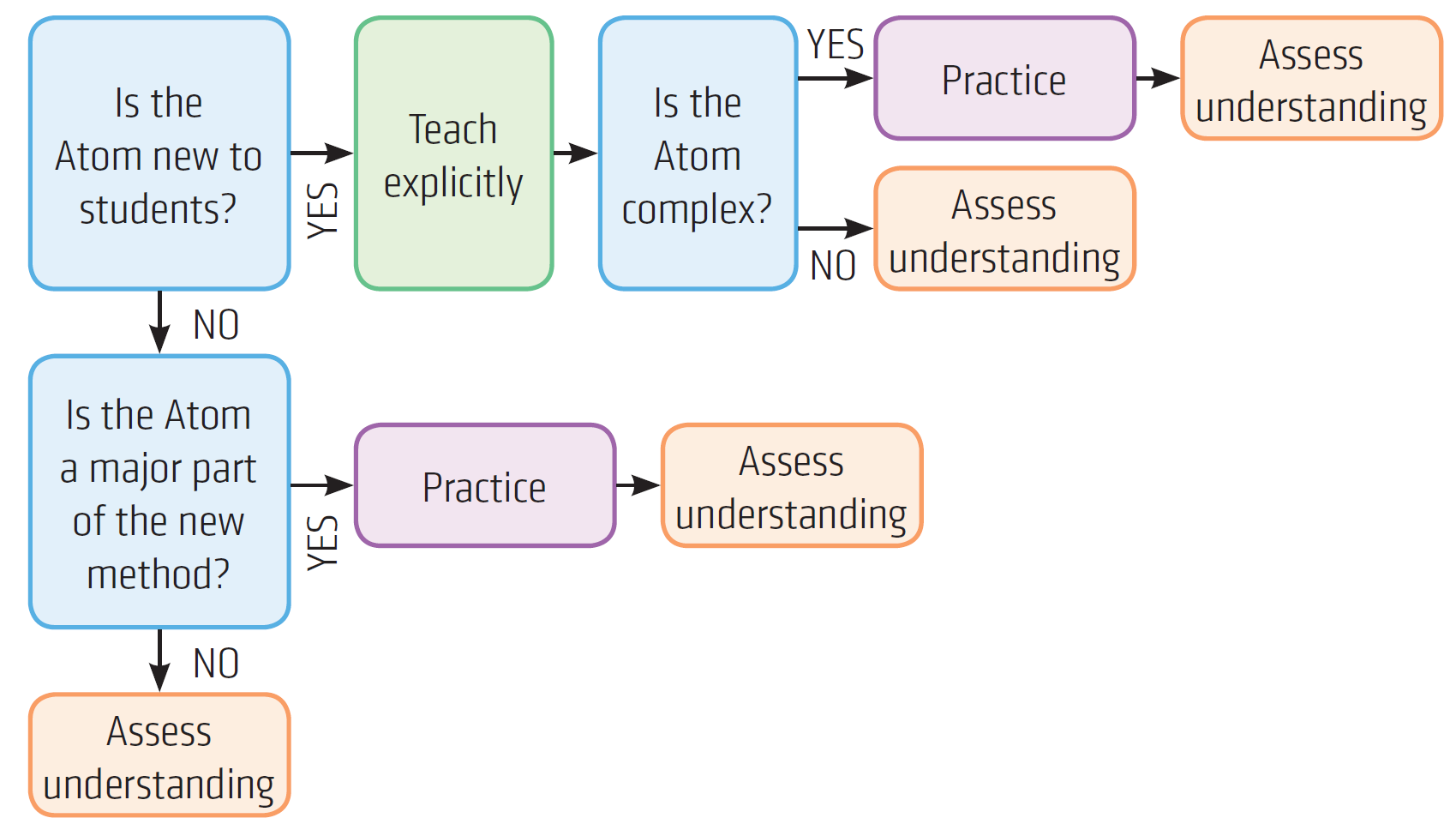
The five stages of the Example-Problem Pair process:

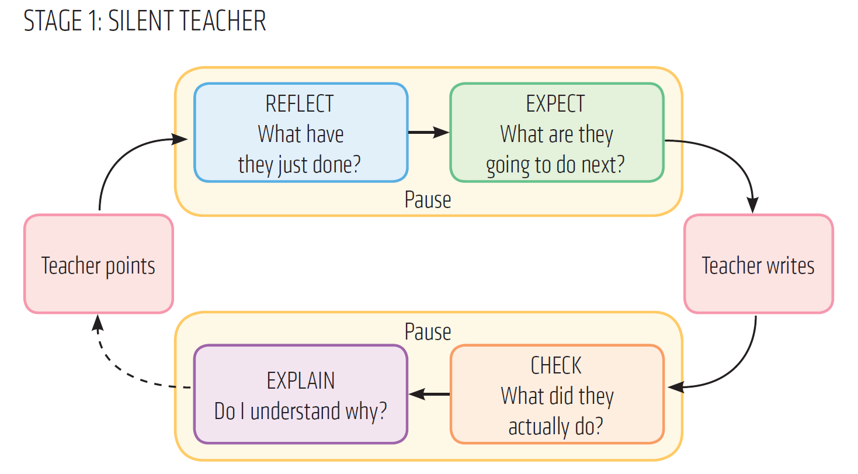
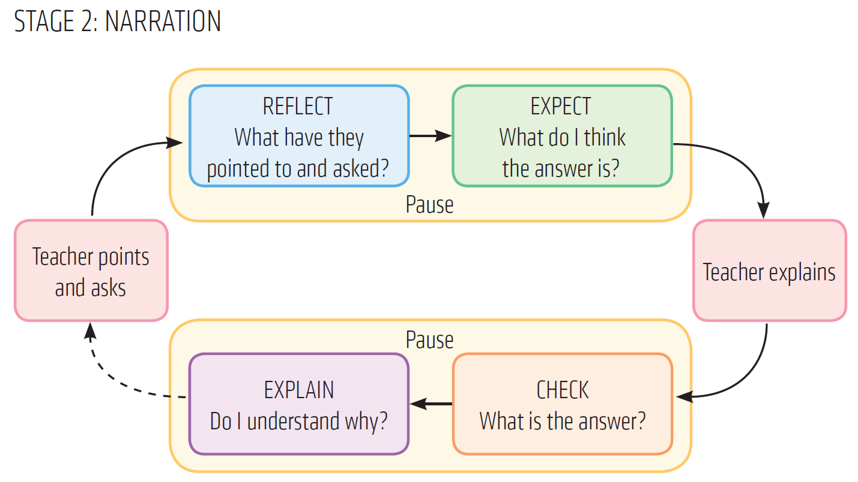
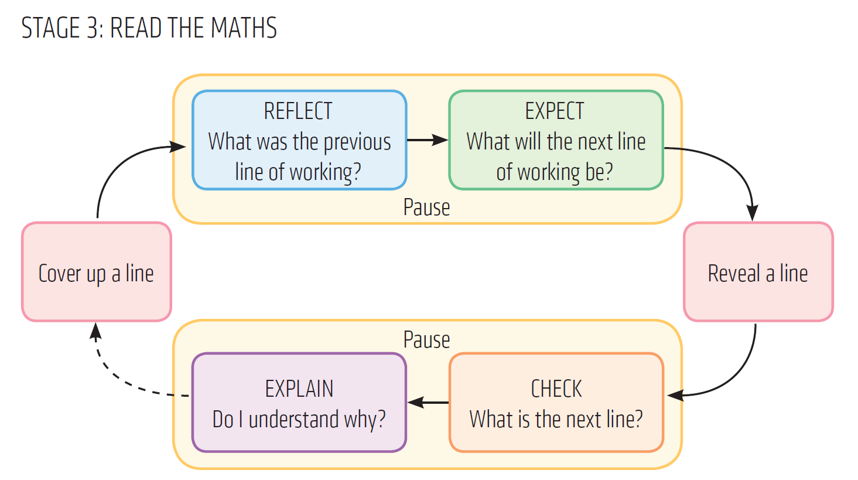
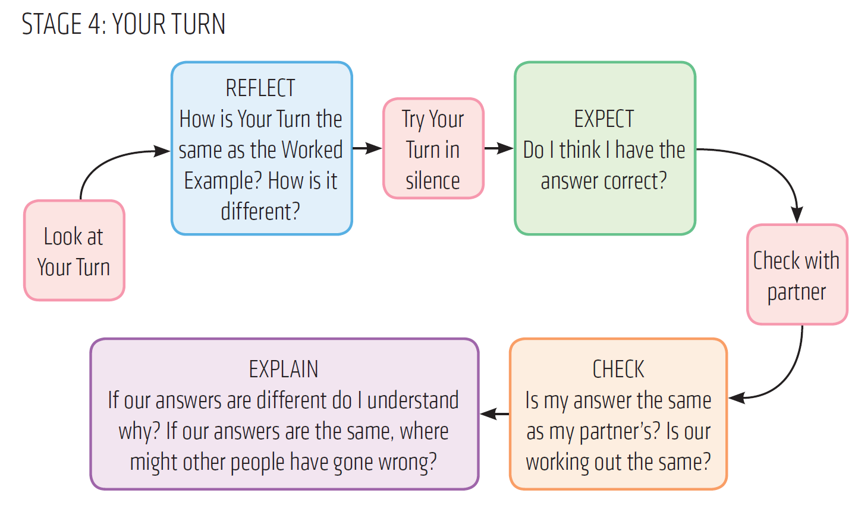
Your Turn prompts:

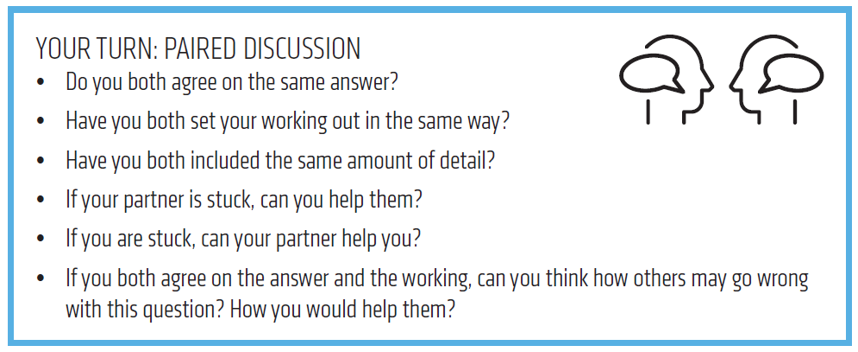
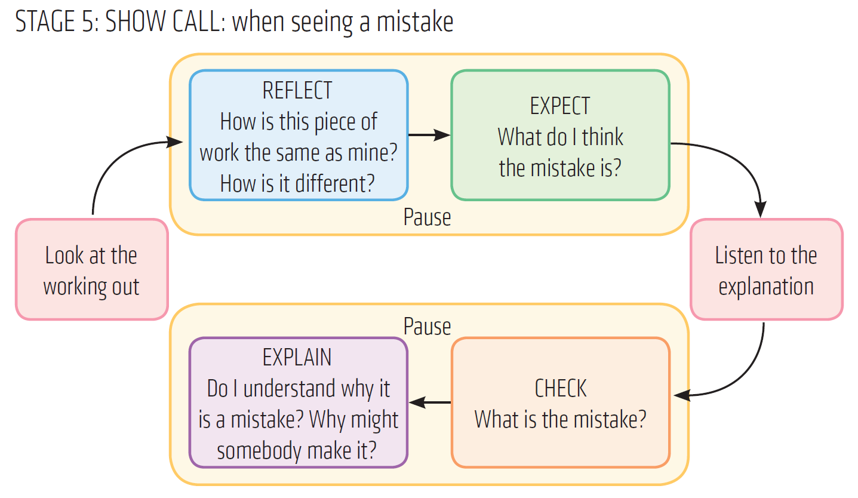
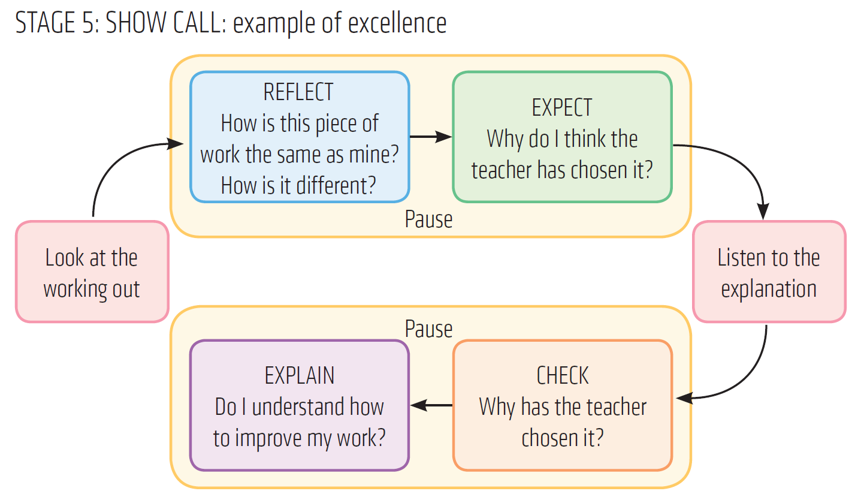
Student prompt cards for each stage of the Example-Problem Pair process:
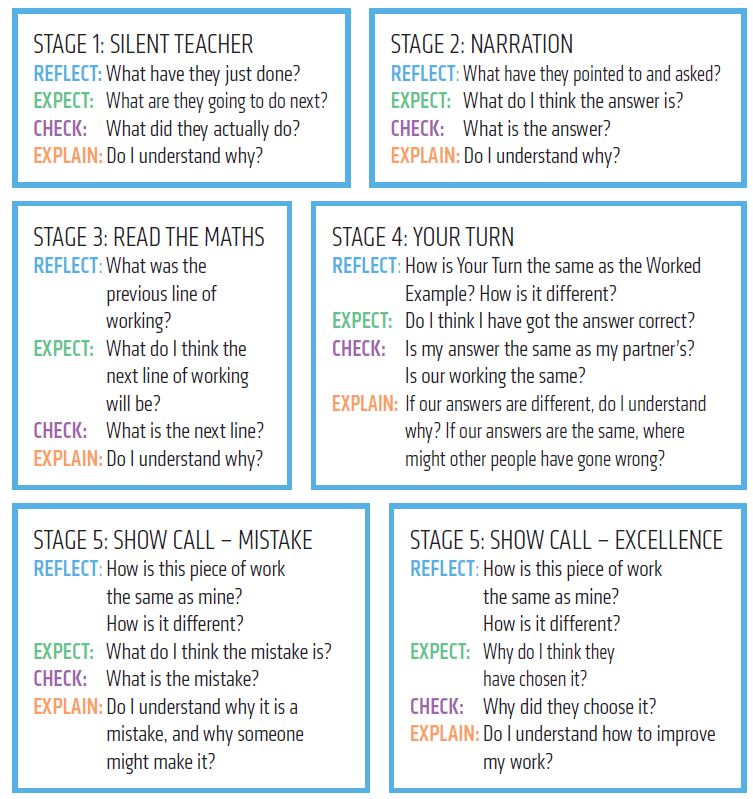
Suzanne Stoppard kindly created and shared a Word version of these Prompt cards where all the cards are the same size and editable here
My process for asking Diagnostic Questions:

My Extension Prompts for Diagnostic Questions:
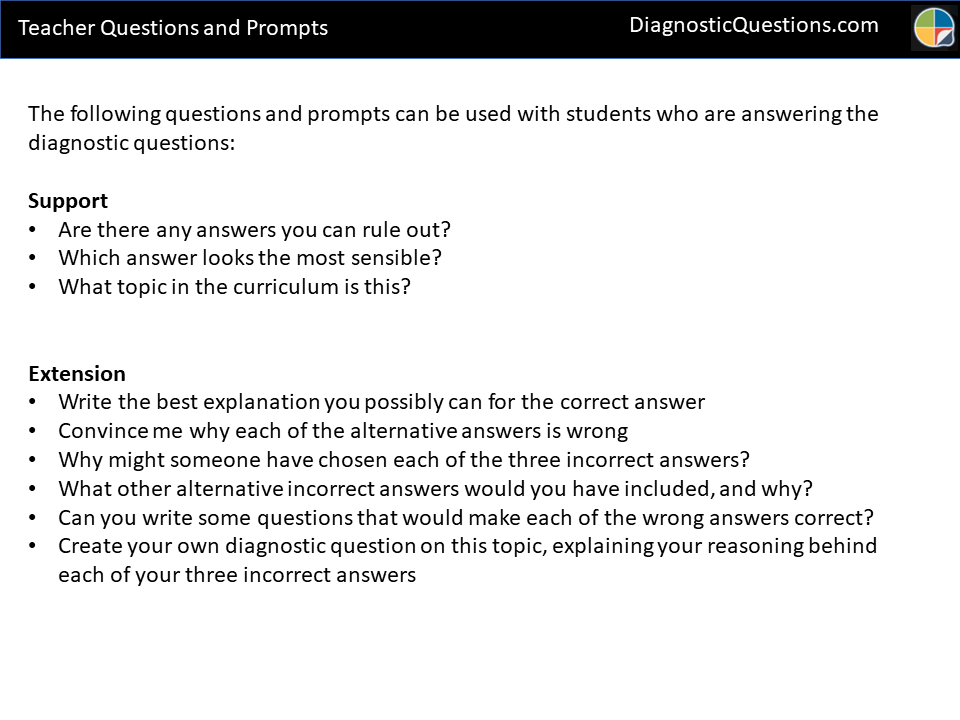
- Julia Smith’s lovely Pythagoras hook
- Dan Anderson’s photo of the Pyramid of Pennies
- The etymology word tree is from the Unit Conversions edition of Jo’s wonderful Topic in Depth series
- White Rose Maths small steps are from their free schemes of work
- The inequality notation Diagnostic Question featuring Tom and Katie
- The inequality notation Diagnostic Question involving negative numbers
- The sequence of questions on finding the midpoint
- The rounding to 1 decimal place Diagnostic Question
- The discussion based Diagnostic Question on forming a sensible estimate for the mean
- Mr Taylor’s Increasingly Difficult Questions on fractions of an amount
- The sharing in a ratio Method Selection sequence
- The factorising quadratic expressions Method Selection sequence
- The percentage operation Method Selection sequence
- Take a Break #3: Reading Scales - decimals
- The first grouped data SSDD Problem
- The second grouped data SSDD Problem
- Martin’s driveway SSDD Problem
- The percentage pay rise SSDD Problem
- The grouped frequency table Goal-Free Problem
- The timetable Goal-Free Problem
- The concert ticket Goal-Free Problem
- The ratio Venn Diagram
- The UKMT questions on averages can be found in the Averages and Range Collections on Diagnostic Questions
- Jamie Frost’s questions on ratio
- Kathryn Darwin on Twitter
- Dan Lewis (@4301maths) interleaved sequences questions
- MathByExamples materials
- AlgebraByExample materials
- The Diagnostic Question on which columns to include in the calculation of the estimate of the mean
- The Diagnostic Question on the weights of Easter eggs
- The Don Steward trapezium question
- Andy Lutwyche’s What was the question?
- Colin Foster’s Possible or Impossible, from Instant Maths Ideas, Statistical Calculations
- Colin Foster’s 17 / 5, from Instant Maths Ideas, Rounding
Chapter 3: Different features of Intelligent Practice sequenceskeyboard_arrow_up
Back to Top
Prompts for student-generated sequences::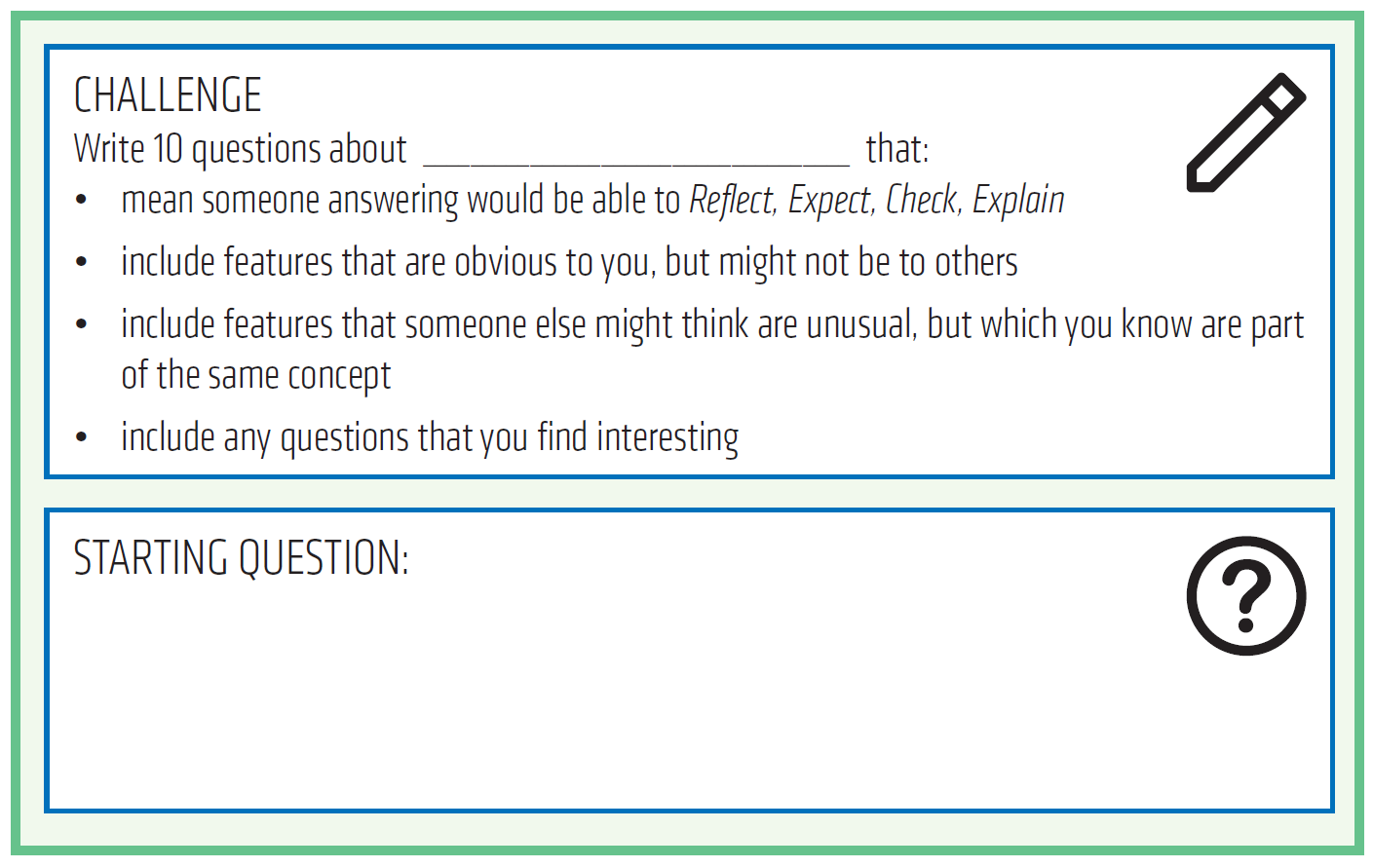
- The simplifying fractions sequence
- The straight line graphs tables of values sequence
- The expanding brackets sequence
- The direct proportion sequence involving rulers
- The mean from a list of data sequence
- The positive integer powers sequence
- The understanding inequality notation sequence
- The group width sequence
- The frequency density sequence
- Fill in the gaps - Histograms
- The reading scales with decimals sequence
- The probability without replacement sequence
- The one-step linear equations sequence
- The factorising double brackets with a purpose sequence
- Fill in the gaps - Quadratics
- Fill in the gaps - Linear sequences
Take a Break #4: Carrying out rotationskeyboard_arrow_up
Back to Top
- The carrying out rotations sequence
- Colin Foster’s Staying on the page task
Chapter 4: Intelligent Practice FAQskeyboard_arrow_up
Back to Top
- The sharing in a ratio sequence
- The first UKMT question can be found in the percentages collections
- The second UKMT question can be found in the ratio collections
- The percentage of an amount sequence
Take a Break #6: Equation of a tangent to a circlekeyboard_arrow_up
Back to Top
Chapter 5: Rulekeyboard_arrow_up
Back to Top
My process for running Rule sequences of examples:
Prompts for discussions with partner before the answer is
revealed:
Prompts for discussions with partner after the answer is
revealed:
Teacher prompts for Discuss Relationships:
Teacher prompts for Delving Deeper:
Frayer diagram template:
Chapter 6: Different uses of Rulekeyboard_arrow_up
Back to Top
- What is a polygon sequence
- What is frequency sequence
- Is this number in standard form sequence
- Is this the subject of the formula sequence
- When can you use the multiplication law sequence
- Number of significant figures sequence
- Factors sequence
- Prime factors sequence
- Factors from prime factors sequence
- Types of numbers from prime factors sequence
- Prime factor decomposition Fill in the gaps
- Product of prime factors - generalising
- Ordering decimals sequence
- Multiplying or dividing an integer by a fraction sequence
- Basic differentiation sequence
Take a Break #7: Averages and range from a list of
data: Increase, decrease, same?keyboard_arrow_up
Back to Top
Chapter 7: Patternkeyboard_arrow_up
Back to Top
My process for running Pattern sequences of questions:
Student prompts for discussion:
Pattern prompts for delving deeper:
- Addition of negative numbers sequence
- Adding and subtracting negative numbers Intelligent Practice
- Adding and subtracting negative numbers Fill in the gaps
- Addition Structured Variation Grid is available here and here
- Dividing with decimals sequence
- Power of zero sequence
- Expanding double brackets sequence
- The quadratic expressions Structured Variation Grid
Take a Break #8: Constructionskeyboard_arrow_up
Back to Top
Chapter 8: Demonstrationkeyboard_arrow_up
Back to Top
My process for running Demonstration sequences of examples:
Prompts for discussions with partner before the answer is
revealed:
Prompts for discussions with partner after the answer is
revealed:
Teacher prompts for Discuss Relationships:
Teacher prompts for Delving Deeper:
- The straight line graphs Demonstration
- The straight line graphs Venn Diagrams activity
- The angle at the centre demonstration
- The area of a triangle demonstration
Chapter 9: Summary tablekeyboard_arrow_up
Back to Top
A summary of the four types of sequences and where they fit into
a Learning Episode:
Chapter 10: Teachers writing their own sequences of
questions and exampleskeyboard_arrow_up
Back to Top
A structure for teacher trying sequences:
A structure for teacher writing their own sequences:
